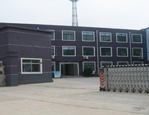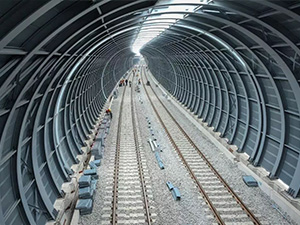Acoustical design solution for Theatre
Publish date:2018-06-27 Views:737

Key points of acoustics design
First, the design of the theater should include the design of architectural acoustics (including two parts of the interior sound design and noise control), and the architectural acoustics design should be involved in the whole process of architectural and decorative design.
Two, the sound reinforcement design should be closely integrated with the architectural acoustics design; the decoration design should meet the acoustic design requirements.
Three, the theatre of natural acoustics should be mainly Acoustics Based on architectural acoustics.
Relevant standards and regulations for acoustical design of theaters
1.Code for architectural acoustics design of theaters, cinemas and multi-purpose auditorium GB/T 50356-2005 2.Code for architectural acoustics design of theatre JGJ 57-2000
3.The standard of sound environmental quality (GB 3096-2008)
4.Code for design of sound reinforcement system in auditorium (GB 50371-2006)
5. "Standard for measurement of reverberation time in halls" GBJ76-84
6.building sound insulation and sound absorption structure (National Architectural Standard Design Atlas 08J931)
7. Code for indoor environmental pollution control of civil engineering buildings (GB50325-2001)
8. Code for fire protection design of buildings GBJ16-1987 (2001 Edition)
9.Code for fire protection of interior decoration design (GB50222-95)
Solution
As the sound absorption and noise reduction can only reduce the reverberation sound, it can not reduce the direct sound. The noise reduction effect is related to the original sound absorption and receiver position in the room, so it can only be used under certain conditions.
1.if indoor ceiling and wall surface is a hard reflection surface, and there is not a certain number of sound absorption properties, indoor reverberation sound is prominent, sound absorption and noise reduction effect is obvious. For example, when a large number of decorative materials such as marble, terrazzo, glass and metal plate are used indoors, the sound of the reverberation is very strong. At this time, if a part of the sound absorbing material is added, the sound environment of the room can be greatly improved and the quiet atmosphere is added.
2.if there is considerable sound absorption in the room and the reverberation sound is not obvious, the effect of sound absorption and noise reduction is not large.
3.when the indoor noise source is evenly distributed, the direct sound plays a major role. At this time, the effect of sound absorption and noise reduction is poor.
4. when there is only one noise source or less noise source in the room, the distance from the sound source is greater than the distance from the critical distance, and the sound absorption and noise reduction effect is significantly higher than the near field near the sound source.
5. when the location of noise reduction is very close to the noise source, direct noise reaches the main position, and the effect of sound absorption and noise reduction is not large. At this time, if a barrier is set near the noise source to reduce the direct sound, the sound absorption processing near the noise source will also have some effect.
6. because the effect of sound absorption and noise reduction is to reduce the reverberation sound and not to reduce the direct sound, therefore, it is more appropriate for the sound absorption to make the reverberation sound to the level of the direct sound to the sound. This is because the amount of sound absorption and noise reduction is logarithmic rather than proportional to the amount of sound absorbing material, not the more the sound absorbing material is used, the better the effect of noise reduction.
7.sound absorption and noise reduction is generally 3-8dB, and a very significant place of reverberation can reach about 10dB. In general, the average noise reduction of the untreated room is more than 5-7dB. When higher noise reduction is required, noise isolation or other comprehensive measures should be used.











